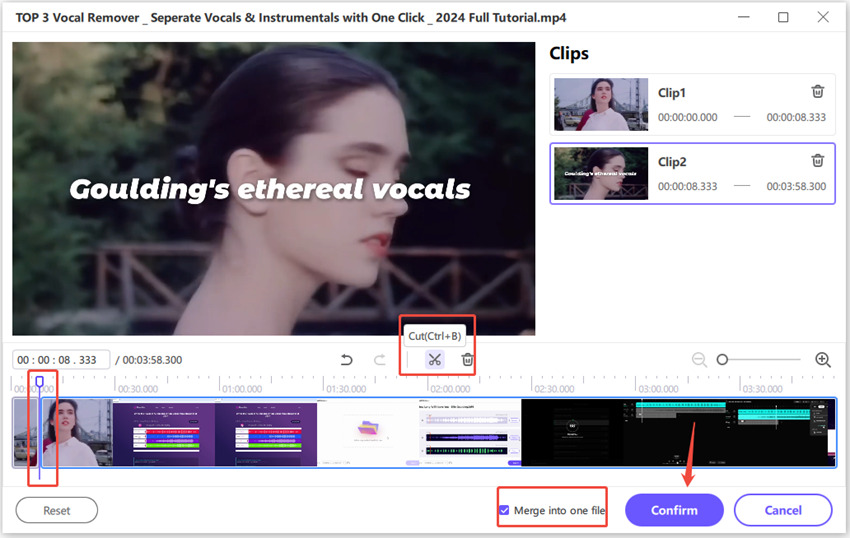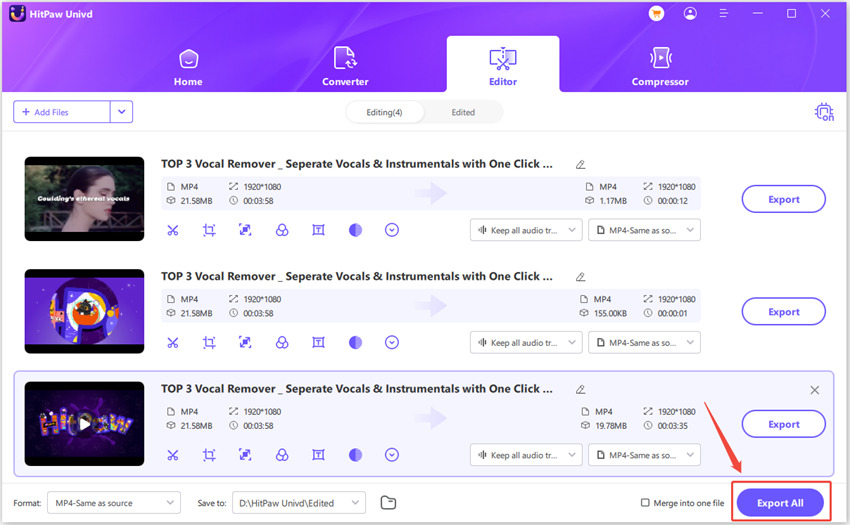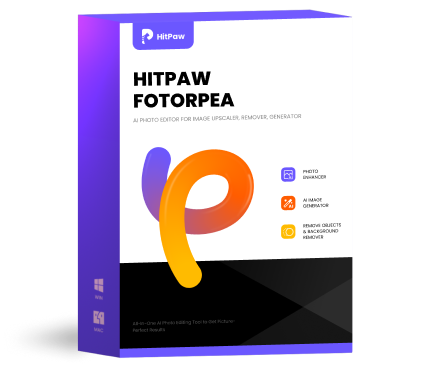5 Ways to Trim Video Using FFMpeg Precisely
Trimming videos is a common requirement in video editing, whether for removing unwanted sections or creating highlights. FFmpeg, a powerful command-line tool, is a go-to solution for professionals and enthusiasts. However, using FFmpeg to trim or cut videos, especially without re-encoding, can be tricky for beginners. This guide simplifies the process, covering various FFmpeg methods like -ss, -t, trim filter, and -to, as well as providing an easier alternative with HitPaw Univd.
Part 1: FFmpeg Trim Video Using the '-ss' and '-t' Options
Trimming videos using the '-ss' and '-t' options is one of the most straightforward methods FFmpeg offers. This approach allows you to define a specific start time ('-ss') and duration ('-t') for your video trim. Whether you want to skip the beginning, extract a segment, or trim from a specific point, this method provides flexibility while maintaining high processing speed.
Why Choose the FFmpeg '-ss' and '-t' Options?
The '-ss' option enables you to seek to a specific timestamp in the video, while the '-t' option defines the duration of the trimmed segment. This method avoids unnecessary re-encoding when combined with the '-c:v copy' and '-c:a copy' commands, preserving the original video and audio quality. It is particularly efficient for simple cuts where precision to the nearest frame isn't critical.
Pros
- Fast and efficient for basic trimming tasks.
- Preserves original quality when re-encoding is avoided.
Cons
- Slightly less accurate when '-ss' is used before '-i'.
Option 1. Trim from the Beginning:
Skip the initial seconds of a video by using the '-ss' option.
Example Command:
ffmpeg -ss 00:00:10 -i myclip.mp4 -c:v copy -c:a copy trimmed_start.mp4
This skips the first 10 seconds and saves the rest of the video as 'trimmed_start.mp4'.
Option 2. Trim from a Specific Point to the End:
Define a starting point and let FFmpeg process the video until the end.
Example Command:
ffmpeg -ss 00:00:05 -i myclip.mp4 trimmed_output.mp4
Option 3. Trim a Specific Segment:
Use the '-t' option along with '-ss' to extract a specific duration.
Example Command:
ffmpeg -ss 00:00:05 -t 00:00:10 -i myclip.mp4 -c:v copy -c:a copy trimmed_segment.mp4
This extracts a 10-second clip starting from the 5-second mark.
Part 2: FFmpeg Trim Video Using the 'trim' Filter
For users seeking more control over the trimming process, FFmpeg's 'trim' filter offers advanced functionality. Unlike the '-ss' and '-t' options, the 'trim' filter works as part of FFmpeg's 'libavfilter' library, allowing you to specify start times, end times, or durations directly within a video processing filter.
Why Use the FFmpeg 'trim' Filter?
The 'trim' filter is ideal for scenarios requiring frame-accurate cuts or when combining trimming with additional video processing tasks. While it requires re-encoding, it provides unparalleled precision and can be combined with other filters for complex editing.
Pros
- High precision with frame-level accuracy.
- Versatile for advanced editing tasks.
Cons
- Requires re-encoding, which may take longer.
Option 1. Trim by Duration:
Define a specific duration to keep from the beginning of the video.
Example Command:
ffmpeg -i myvideo.mp4 -vf "trim=duration=5" output_trimmed.mp4
Option 2. Trim by Start and End Times:
Use both 'start' and 'end' parameters for precise segment extraction.
Example Command:
ffmpeg -i myvideo.mp4 -vf "trim=start=2:end=8,setpts=PTS-STARTPTS" trimmed_segment.mp4
Option 3. Trim with Audio Preservation:
Retain original audio while trimming a specific segment.
Example Command:
ffmpeg -i myvideo.mp4 -vf "trim=start=2:end=8,setpts=PTS-STARTPTS" -c:a copy trimmed_with_audio.mp4
Part 3: FFmpeg Trim Video Using the '-to' Option
The '-to' option provides another intuitive way to trim videos, focusing on specifying an endpoint for the trimmed segment. When combined with the '-ss' option, it allows you to extract precise sections efficiently.
Why Choose the FFmpeg '-to' Option?
This method simplifies the process of defining an endpoint for the trim. It's particularly useful for users who prefer to specify time ranges rather than durations.
Pros
- Easy to define a range with start and end points.
- Supports efficient trimming without re-encoding.
Cons
- Less versatile for complex tasks compared to the 'trim' filter.
Trim a Segment Using '-to':
Specify both the start time and end time.
Example Command:
ffmpeg -i input.mp4 -ss 00:01:00 -to 00:02:30 -c:v copy -c:a copy trimmed_output.mp4
The '-to' option behaves similarly to '-t' but focuses on the endpoint.
Part 4: FFmpeg Trim Video Using the '-sseof' Option
The '-sseof' option trims videos from the end, making it unique among FFmpeg's trimming methods. By specifying a negative value, users can extract segments relative to the video's endpoint.
Why Use the FFmpeg '-sseof' Option?
This method is perfect for cases where you need to trim the last few seconds of a video or extract content close to the end.
Pros
- Simplifies trimming from the end of a video.
- Efficient for extracting trailing segments.
Cons
- Limited to use cases involving the end of the video.
Trim the Last Few Seconds:
Use a negative time value to define the segment.
Example Command:
ffmpeg -sseof -10 -i input.mp4 trimmed_last_10_seconds.mp4
Part 5: How to Cut Video Using FFmpeg Without Re-Encoding
Re-encoding can degrade quality and increase processing time. For users prioritizing speed and quality, trimming videos without re-encoding is a valuable feature of FFmpeg. By using commands like '-c:v copy' and '-c:a copy', you can skip this step entirely. This method avoids unnecessary processing and retains the original codecs.
Example Command:
ffmpeg -ss 00:00:05 -i video.mp4 -to 00:00:15 -c:v copy -c:a copy trimmed.mp4
Part 6: An Easier Video Cutter Alternative
While FFmpeg is a powerful tool for video editing, its command-line interface can be intimidating for those who prefer a more straightforward, user-friendly approach. This is where HitPaw Univd comes in as a great alternative for video cutting. Designed with simplicity in mind, HitPaw Univd provides an intuitive graphical interface that allows users to trim videos easily, without the need for technical knowledge or complex commands.
- Trim videos without re-encoding, preserving the original video quality
- Support a variety of popular video formats (MP4, MOV, AVI, MKV, etc.)
- Trim videos quickly, even large files, without compromising on processing time
- Before finalizing your edits, preview the trimmed section to ensure accuracy
- In addition to trimming, you can also rotate, crop, adjust aspect ratios, and apply effects
Step 1.Open the program after installation. You'll be greeted with a simple interface where you can start editing your video right away.

Step 2.Click on the "Import" button to upload the video you want to trim. HitPaw Univd supports drag-and-drop functionality, so you can easily drag your video into the program.
Step 3.Use the "Trim" tool to select the starting and ending points of the section you want to keep. Simply drag the sliders to define the cut area, or you can manually enter the start and end times.

Step 4.Before saving, use the "Preview" option to check the trimmed video and make sure the section you've selected is exactly what you want. This ensures there are no mistakes before you finalize the cut.

Step 5.Once you're satisfied with your selection, hit "Export" or "Save" to save the trimmed video. Choose the destination folder and file format (if necessary) before confirming the save.
Conclusion
FFmpeg provides powerful tools for trimming videos, whether using -ss, -t, or the trim filter. While FFmpeg is versatile, its complexity can deter casual users. For an easier alternative, HitPaw Univd simplifies the process with a sleek interface and robust features. Whether you choose FFmpeg or HitPaw Univd, you now have all the tools needed to trim your videos like a pro.













 HitPaw FotorPea
HitPaw FotorPea HitPaw VoicePea
HitPaw VoicePea  HitPaw VikPea (Video Enhancer)
HitPaw VikPea (Video Enhancer)



Share this article:
Select the product rating:
Daniel Walker
Editor-in-Chief
This post was written by Editor Daniel Walker whose passion lies in bridging the gap between cutting-edge technology and everyday creativity. The content he created inspires the audience to embrace digital tools confidently.
View all ArticlesLeave a Comment
Create your review for HitPaw articles